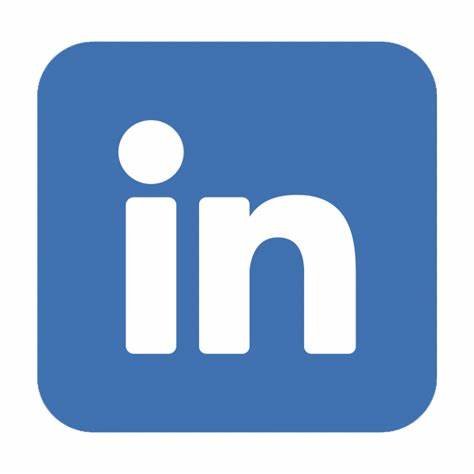Customer expectations are continuously growing, making it crucial to have an efficient contact center. However, traditional models often face limitations such as high costs, rigidity, and complex infrastructure management. This is where CCaaS (Contact Center as a Service) comes into play—a cloud-based contact center solution.
What is a Traditional
contact center:
On-premise refers to software and hardware solutions that are physically deployed and managed within a company's premises. These solutions include servers, data storage, telephony systems, and other technologies required for contact center operations. In traditional contact centers, this is the standard model that allows companies full control over all technical components.

Traditional contact centers rely on robust software solutions, typically installed on the company's local servers. This software focuses on various aspects of contact center operations:
- PBX (Private Branch Exchange) – The foundation of voice communication in a contact center. It enables call routing between customers and agents. Traditional PBX systems are physical devices that require regular maintenance and updates.
- ACD (Automatic Call Distribution) – A software solution that directs incoming calls to the appropriate department or agent based on predefined rules.
- IVR (Interactive Voice Response) – Allows customers to interact with an automated system using voice commands or phone keypad inputs to be redirected to the appropriate service.
- CRM (Customer Relationship Management) – Integrated with the contact center software, it provides agents with access to customer information, including previous interactions, purchases, and preferences.
- CTI (Computer Telephony Integration) – Connects telephone systems with computers, enabling agents to manage calls directly from their workstation.
Who Benefits from On-Premise Contact Centers?
On-premise solutions are ideal for companies that require full control over their infrastructure and data while having sufficient internal resources to manage them efficiently.
Until recently, these solutions were especially suitable for organizations in regulated industries such as financial services, healthcare, or the public sector, where strict requirements for data protection and localization apply. However, even these organizations are increasingly transitioning to cloud-based versions, as their security has improved significantly in recent years.
Additionally, on-premise systems may still be suitable for large enterprises with robust IT teams and the resources to manage hardware, software, and updates. Companies with predictable volumes of customer interactions may find on-premise systems effective if their infrastructure is already established and fully functional.
However, for dynamic and growing businesses, the flexibility and scalability of CCaaS make it a more attractive investment in terms of future growth.

Limitations of On-Premise Solutions:
While this model has been the standard for many years, it has several disadvantages compared to modern cloud-based solutions (CCaaS):
- Complex Implementation and Maintenance - Software must be manually installed, configured, updated, and managed by an internal IT team, requiring time and expertise. Additionally, security patches and system compatibility must be regularly addressed.
- Limited Flexibility and Scalability – Expanding capacity requires purchasing new hardware and software licenses, which is both time-consuming and costly. In contrast, CCaaS allows for easy adjustments based on current needs.
- Difficult Integration – Connecting on-premise systems with other tools (CRM, analytics platforms, omnichannel communication) is often more complicated and may require custom development or middleware, increasing implementation time and costs.
- Lower Availability – On-premise systems depend on local infrastructure, making them susceptible to outages in case of technical failures or natural disasters.
- High Costs - The procurement and maintenance of physical infrastructure, licenses, and IT support involve significantly higher one-time and ongoing expenses compared to cloud solutions.
Considering that modern CCaaS solutions offer the same or even broader functionality but with greater flexibility, scalability, and lower operational costs, it is clear that the on-premise model is no longer the optimal choice for many companies today.
What is CCaaS and How Does It Work?
CCaaS is a cloud-based contact center solution that allows businesses to manage customer interactions without needing extensive on-premise infrastructure. Instead of relying on physical servers, CCaaS operates via the internet, providing businesses with flexible and scalable solutions.

Benefits of CCaaS
✔ Lower costs, higher efficiency
✔ Flexibility and scalability
✔ Multichannel support
✔ Access from anywhere
✔ Fast implementation and updates
✔ Higher level of security and reliability
✔ Easy integration with other systems
✔ Real-time analytics and reporting
On-Premise vs. CCaaS Solutions Comparison
| Area | On-premise Contact Centers | CCaaS |
|---|---|---|
| Infrastructure | Requires physical servers, hardware, and locally deployed software. | Runs in the cloud – no local hardware or servers needed. |
| Costs | High upfront investments in hardware, licenses, and maintenance. | Lower costs, pay-as-you-go subscription model. |
| Implementation | Time-consuming, requires physical installation and an on-site IT team. | Fast deployment, can be operational within days. |
| Scalability | Limited – adding new features or capacity is complicated. | Highly scalable – capacity can be adjusted in real time. |
| Multi-channel Support | Complex – each channel is often managed separately. | Unified management of all channels (voice, email, chat, SMS, social media). |
| Updates | Manual and costly, often cause service interruptions. | Automatic, provider-managed updates with no downtime. |
| Employee Access | Usually limited to the company's physical premises. | Accessible from anywhere via the internet, suitable for remote work. |
| Flexibility | A fixed solution that is hard to adapt to new needs. | Flexible – adjusts to the company's current requirements. |
| Analytics & Insights | Basic performance monitoring, slower integration response times. | Advanced analytics with integrated reporting. |
| Availability During Outages | Dependent on local hardware – outages can paralyze operations. | High availability thanks to redundant cloud-based systems. |
| Long-term Sustainability | Requires regular hardware and software refreshes. | Automatic, with no need for hardware replacement. |
Would you like to learn more about how CCaaS can help you? Contact us, and we will introduce you to the cloud system OMNI-A, built on decades of experience in contact centers.
Related article ➡ Modern Technology for Solutions and Services

